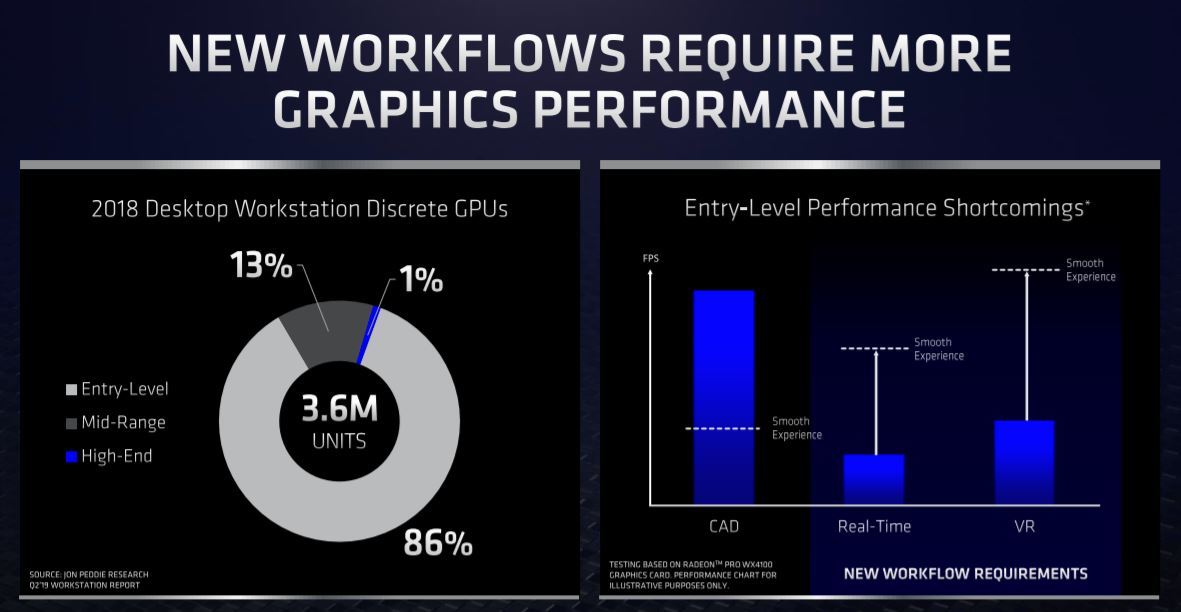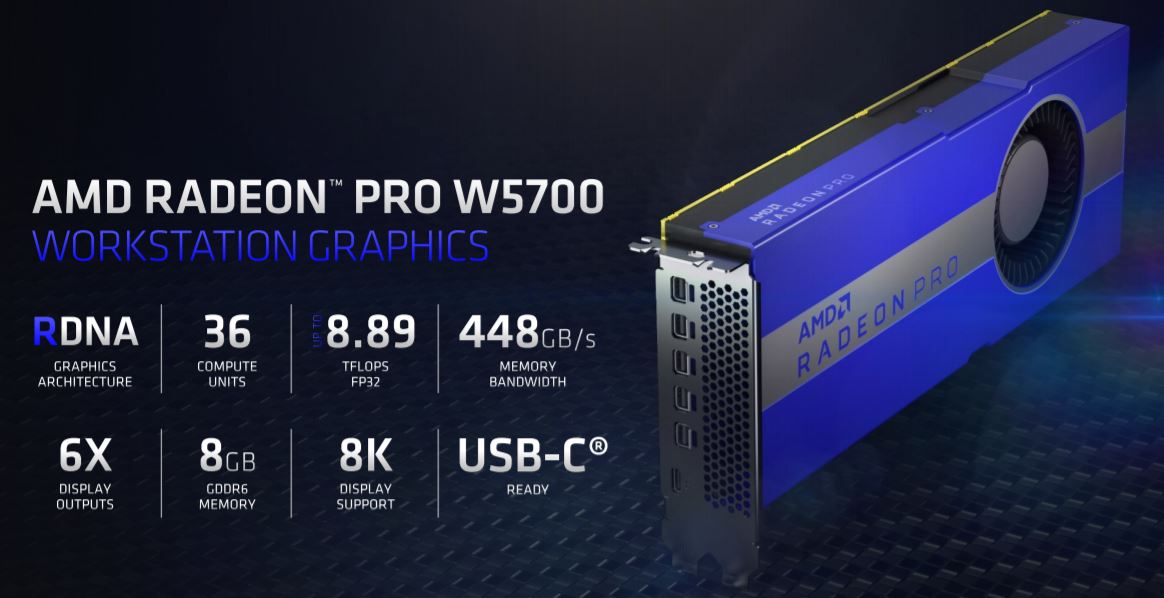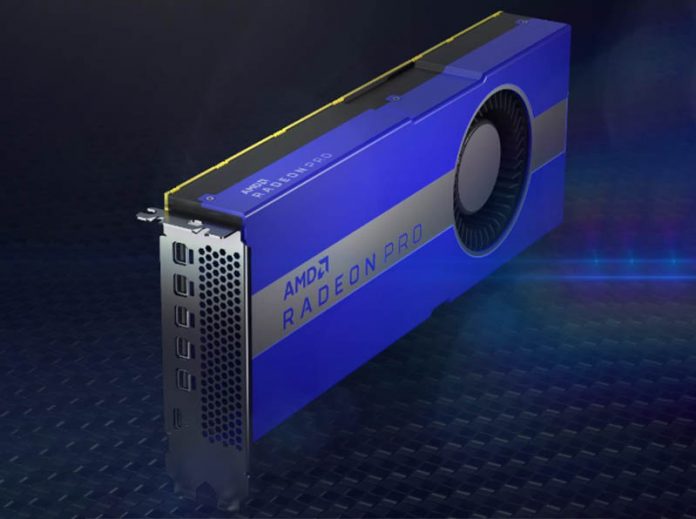Today AMD is launching a new GPU based on its Navi architecture. The AMD Radeon Pro W5700 is designed to bring the company’s newest architecture to the $750-1000 professional workstation market. AMD does not currently have a great answer in its portfolio for the higher-end market segment where one may see NVIDIA cards such as the Titan RTX or Quadro RTX 8000 (review is in our publishing queue.) Still, AMD released a view that shows why it thinks it can be impactful in the market at a $799 price point.
Setting the Stage with Market Numbers
AMD’s pre-brief on the card included JPR market figures that put the 2018 workstation discrete GPU market at around 3.6 million units. We love when vendors provide this kind of data in their briefings.

AMD’s contention is that even if it is unable to really address the high-end with the current Navi generation, it is only losing out on 1% of the unit volume. You are right to also read that chart as the 1% makes up a larger share by revenue. AMD is not targeting the lower end where the AMD Radeon PRO WX 4100 and AMD Radeon Pro WX 3200 sit, but a bit higher in the stack toward the mid-range. With that context, AMD is launching the Radeon Pro W5700.
AMD Radeon Pro W5700 Key Specs
Here are the key specs for the card:

There are a few key specs that really stick out. First, with 36 compute units, 448GB/s of memory bandwidth and 8GB of GDDR6 memory, this card looks a lot like the AMD Radeon RX 5700. It is unlikely the “5700” in both model numbers is a coincidence.
One will also see a much more robust display output array utilizing mini-DP which differentiates the card over its consumer counterpart. AMD is also adopting USB-C like we have seen NVIDIA embrace for newer VR headsets. We were a bit surprised that this card only has 8GB of memory as a bump to 16GB, for example, would have created more differentiation.
Final Words
AMD is claiming 40% better performance than its previous generation along with gains over the NVIDIA Quadro RTX 4000. One of the reasons we are not posting the RTX 4000 comparisons that AMD provided is that the RTX 4000 is a single-width card while the AMD Radeon Pro W5700 is a dual-width card.
For those that rely upon the AMD Radeon Pro Software for Enterprise and AMD ProRender, this is the Navi generation card that will let you access those software stacks.





“AMD does not currently have a great answer in its portfolio for the higher-end market segment where one may see NVIDIA cards such as the Titan RTX or Quadro RTX 8000 (review is in our publishing queue.) Still, AMD released a view that shows why it thinks it can be impactful in the market at a $799 price point.”
What about the Radeon Pro Vega II(1) in the Mac Pro and its Pro Duo variant that’s based on the Vega 20 Die/Tapeout. And that’s 2 Vega 20 Dies on one PCIe card for the dual core variant and the 2 GPU DIEs are interfaced via Infinity Fabric traces across the card’s PCB instead of PCIe/XDMA. So that’s 2 GPUs/Single Card that’s somewhat modular albeit 2 very large Vega 20 dies. So maybe that’s the full Infinity Fabric coherency model between the 2 GPUs on that Radeon Pro Vega II Duo SKU and 2 of those Pro Duos can be interfaced via their xGMI(Infinity Fabric) links, via a dedicated IF bridge connector, same as MI50/MI60. That 4 GPU DIEs(Vega 20) across 2 GPU Cards that are speaking Infinity Fabric at its full coherency capabilities and most likely acting as one larger logical GPU in a similar manner to Nvidia’s NVLink.
The Vega GPU micro-architecture is very FP(DP and SP) shader heavy compared to Navi/RDNA and Navi 10 Die/Tapeout which is rather sparsely populated for FP 32/64 relative to Vega 20. So really Navi 10 is more tuned for getting maximum frame time performance for games and is not really as good for raw compute as Vega 20.
I suspect that AMD’s rumored Arcturus will be the non Apple variants of the Radeon Vega II custom Apple SKUs and that 2 Vega 20 GPUs on a single PCIe card interfaced via the Infinity Fabric will have some level of performance that may exceed Nvidia’s high end offerings.
I’m glad to see AMD offer up some Navi/RDNA professional variants on the low end but that’s only going to go so far for professional usage until AMD gets a beefed up RDNA Base Die Tapeout that can match the Vega 20 for total DP and SP FP performance along with whatever the RDNA micro-architecture brings in Shader core IPC improvements over Vega.
That 2019 Mac Pro Sure Quacks like a server SKU what with all that passive cooling design, now if Apple could replace the Intel Xeon with some Epyc/Rome.
I do hope that STH can get their hands on a fully outfitted Mac Pro for some testing because that Infinity Fabric networking of 4 Vega 20 GPUs should be giving Nvidia some higher end competition to some degree via Apple and hopefully some non Apple variants as well for the remainder of the workstation market place. Does Navi/RDNA even support Vega’s HBCC/HBC IP and virtual VRAM address space capabilities.
(1)
“Radeon™ Pro Vega II”
https://www.amd.com/en/graphics/workstations-radeon-pro-vega-ii